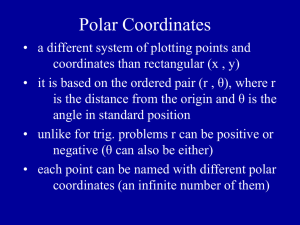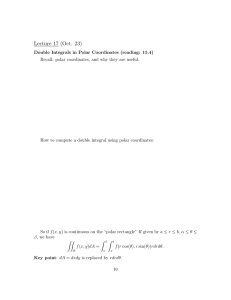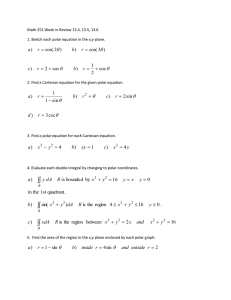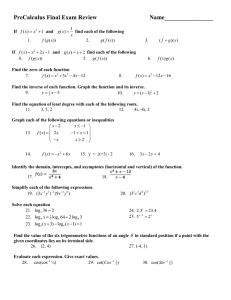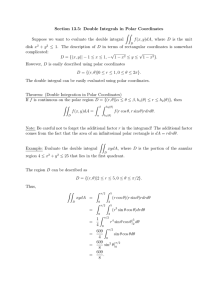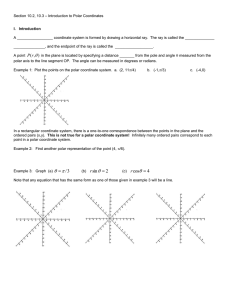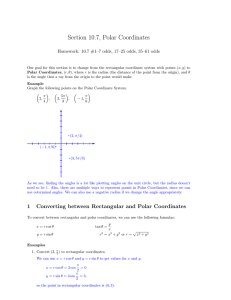More trig, polar coordinates, and chain rule
advertisement
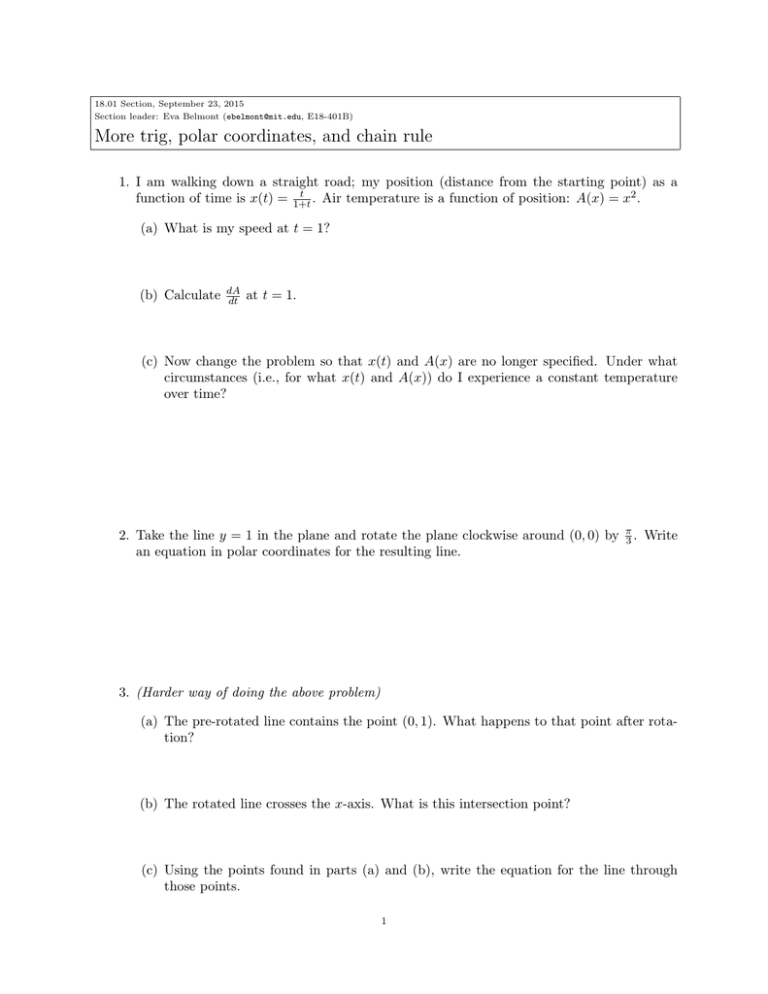
18.01 Section, September 23, 2015 Section leader: Eva Belmont (ebelmont@mit.edu, E18-401B) . More trig, polar coordinates, and chain rule 1. I am walking down a straight road; my position (distance from the starting point) as a t function of time is x(t) = 1+t . Air temperature is a function of position: A(x) = x2 . (a) What is my speed at t = 1? (b) Calculate dA dt at t = 1. (c) Now change the problem so that x(t) and A(x) are no longer specified. Under what circumstances (i.e., for what x(t) and A(x)) do I experience a constant temperature over time? 2. Take the line y = 1 in the plane and rotate the plane clockwise around (0, 0) by an equation in polar coordinates for the resulting line. π 3. Write 3. (Harder way of doing the above problem) (a) The pre-rotated line contains the point (0, 1). What happens to that point after rotation? (b) The rotated line crosses the x-axis. What is this intersection point? (c) Using the points found in parts (a) and (b), write the equation for the line through those points. 1 (d) Check that this agrees with your answer in problem 2. 4. Twenty milliliters of paint exactly covers the surface of a closed cube of side length 1 ft. Assume thickness of paint is constant. (a) If I have a cubical box of side length 1.1 ft, use linear approximation to estimate how much paint is needed. (b) If I have 21 milliliters of paint, use linear approximation to estimate the cube size this can cover. 5. Suppose f (0) = 0. What can I say about limh→0 f (h) h ? Review • Sum formulas: sin(A + B) = sin A cos B + cos A sin B cos(A + B) = cos A cos B − sin A sin B • Chain rule: d f (g(x)) = f 0 (g(x)) · g 0 (x) dx • Converting rectangular coordinates to polar coordinates: x = r cos θ y = r sin θ • Converting polar coordinates to rectangular coordinates: p r = x2 + y 2 θ = tan−1 2 y x



